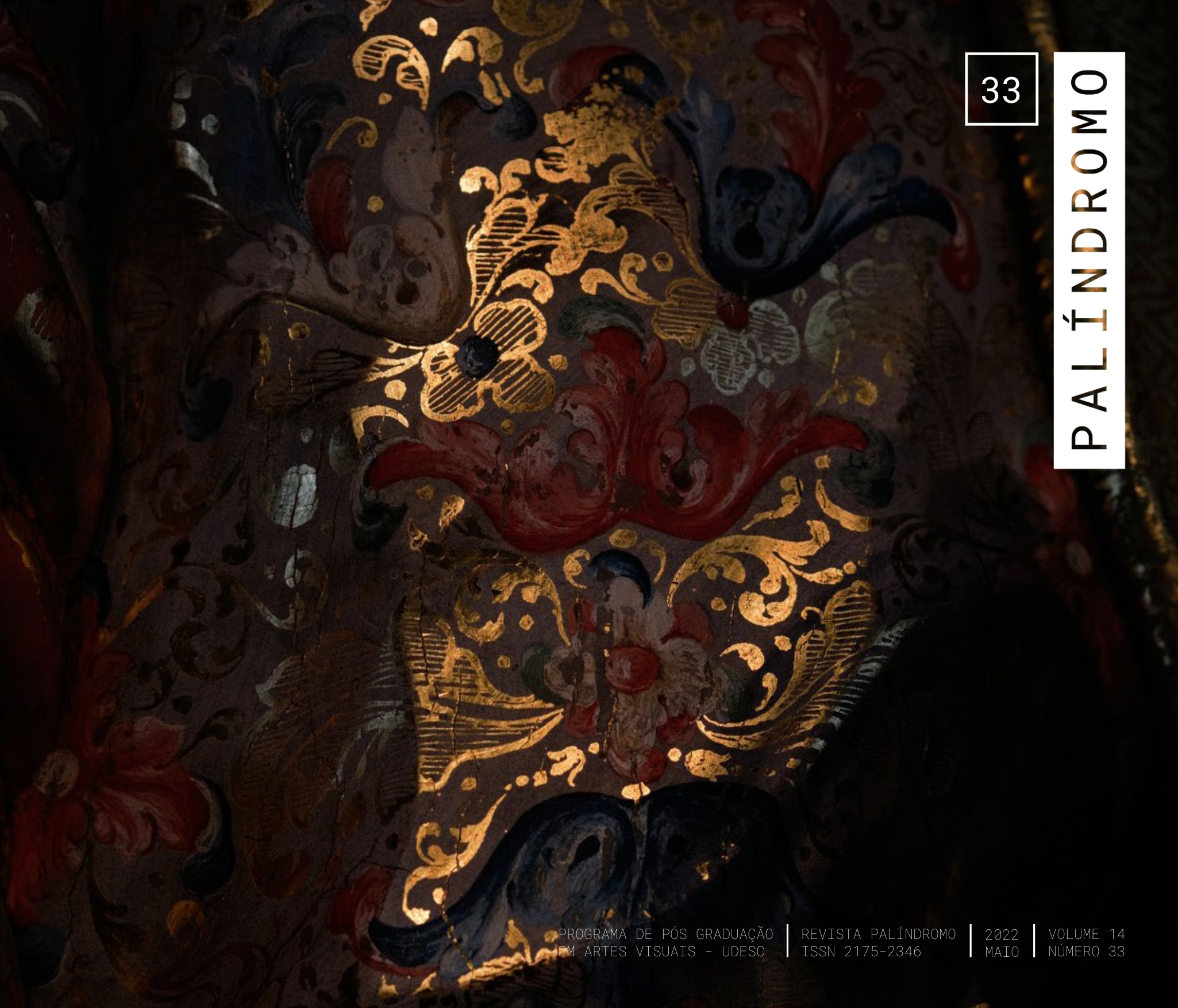Uniting the divine and the human: a dive into the details and the symbolism of three medieval Virgins
DOI:
https://doi.org/10.5965/2175234614332022162Keywords:
Virgin Mary, Medieval Art, Sculpture, Detail and SymbolismAbstract
This paper develops a reflection on how the details can reveal the symbolisms that generate meanings in the image, and how the artists represented references to other areas of the arts in the sculpture in question. The study starts from three medieval sculptures that depict the Virgin Mary and the Child Jesus and establish dialogues about the human and divine character of Mary in Christian iconology. The Marian cult had great appeal in the Middle Ages and the chosen sculptures are works that feature different styles. One sculpture represents the humanized Virgin, the other is presented as a composite reliquary, and the last is an image of the human Mary, immersed in grief.
Downloads
References
Bíblia, Novo Testamento. Disponível em: https://bible.knowing-jesus.com/Portuguese/ Com acesso em 10 de janeiro de 2022.
CAMPBELL, Joseph. The Masks of God 2: Oriental Mythology. USA: Penguin, 1991.
CARLQUIST, Jonas. Introduction - Virgin, Mother, Queen, and Bride: Visual Representations of the Virgin Mary in Wall Paintings by Passionsmästaren of Gotland. In: CARLQUIST, Jonas; LANGUM, Virginia (orgs.). Words and Matter: The Virgin Mary in Late Medieval and Early Modern Parish Life. Sällskapet Runica et Mediævalia Stockholm, 2015.
Department of Medieval Art and The Cloisters. “The Cult of the Virgin Mary in the Middle Ages.” In: Heilbrunn Timeline of Art History. New York: The Metropolitan Museum of Art, 2000–. http://www.metmuseum.org/toah/hd/virg/hd_virg.htm (October 2001)
ERIKSSON, Ann-Catrine. Virgin, Mother, Queen, and Bride: Visual Representations of the Virgin Mary in Wall Paintings by Passionsmästaren of Gotland. In: CARLQUIST, Jonas; LANGUM, Virginia (orgs.). Words and Matter: The Virgin Mary in Late Medieval and Early Modern Parish Life. Sällskapet Runica et Mediævalia Stockholm, 2015.
GABORIT-CHOPIN, Danielle. Le trésor de Saint-Denis, Paris, musée du Louvre, 1991, n° 51, p. 246 et site internet du musée du Louvre, notice Cimaise rédigée par Muriel Barbier. In : https://collections.louvre.fr/en/ark:/53355/cl010096615 Com acesso em 12 de fevereiro de 2022.
HALL, James. Dictionary of Subjects and Symbols in Art. London: J. Murray, 1974.
HARRIS, Beth; ZUCKER, Stephen. Humanizing Mary: the Virgin of Jeanne D’Evreux. In: Smart History, The Center for Public Art History, 2017. Disponível em: https://shistory.com/virgin-jeannedevereux/ Com acesso em 12 de novembro de 2020.
HARRIS, Beth; ZUCKER, Stephen. Hiding the divine in a medieval Madonna: Shrine of the Virgin. In: Smart History, The Center for Public Art History, 2020. Disponível em: https://shistory.com/shrine-of-the-virgin/ Com acesso em 13 de janeiro de 2021.
HERNANDO, Irene González. Las Vírgenes Abrideras. In: Revista Digital de Iconografía Medieval, vol. I, nº 2, 2009, pp. 55-66. e-ISSN: 2254-853X.
HUIZINGA, Johan. O Outono da Idade Média. SP: Cosac & Naify, 2010.
JAMES, Liz. Senses and sensibility in Byzantium. In: Art History. ISSN 0141-6790. Vol. 27, No 4. UK: Blackwell Publishing, 2004. P. 522–537. DOI: https://doi.org/10.1111/j.0141-6790.2004.00436.x
LEYSER, Henrietta. Medieval Women: Social History Of Women In England 450-1500 (WOMEN IN HISTORY). London: Weidenfeld & Nicolson, 2013.
LIEPE, Lena. On the Epistemology of Images. In: BOLVIG, Axel; LINDLEY, Philip (Editors). History and Images: Towards a New Iconology. Medieval Texts and Cultures of Northern Europe 5. Turnhout: Brepols, 2003. DOI: https://doi.org/10.1484/M.TCNE-EB.3.2028
PRICE, Richard; GRAUMANN, Thomas. The Council of Ephesus of 431: Documents and Proceedings. Translated Texts for Historians. UK: Liverpool University Press, 2020.
ROSS, Nancy. Röttgen Pietà. An emotional Response. In: Khan Academy Essay, 2015. Disponível em: https://www.khanacademy.org/humanities/rottgen-pieta/ Com acesso em 07 de janeiro de 2020.
STEPHEN, Davis. Christ Child: Cultural Memories of a Young Jesus. New Haven: Yale University Press, 2014. DOI: https://doi.org/10.12987/yale/9780300149456.001.0001
Downloads
Published
How to Cite
Issue
Section
License
Copyright (c) 2022 Luciane Ruschel Nascimento Garcez

This work is licensed under a Creative Commons Attribution 4.0 International License.
COPYRIGHT STATEMENT
The articles published by the magazine are free to use, intended for academic and non-commercial applications. Copyright is all assigned to the magazine. The articles whose authors are identified represent the expression from the point of view of their authors and not the official position of Palíndromo Magazine. The author (s) commits to whenever they publish material referring to the article published in Palíndromo mention this publication as follows:
This article was originally published by Palíndromo magazine in its volume (place the volume), number (place the number) in the year of (place the year) and can be accessed at: http://www.revistas.udesc.br/index.php/palindromo


